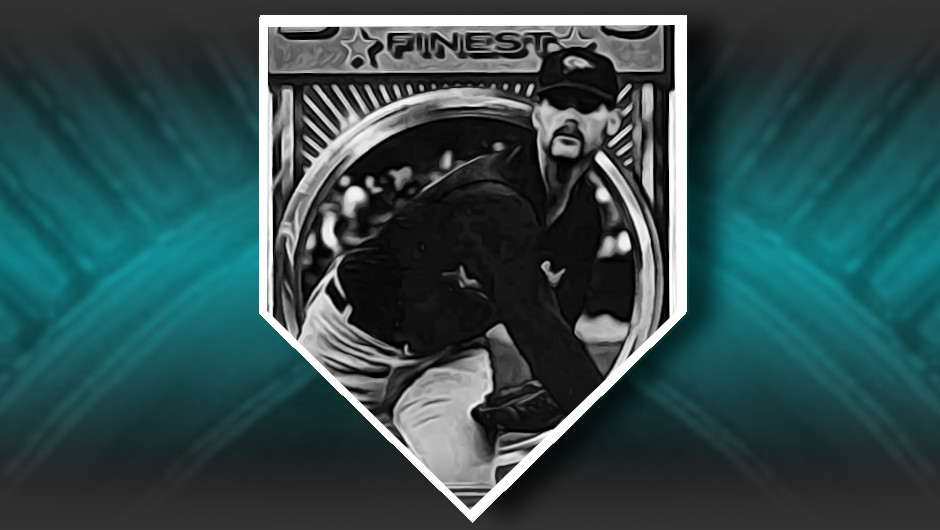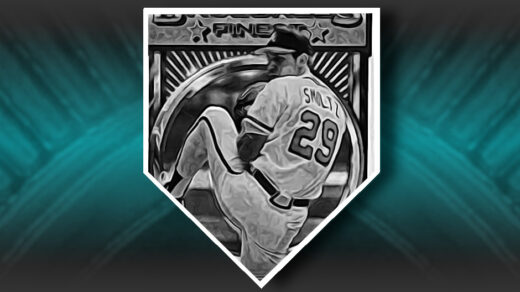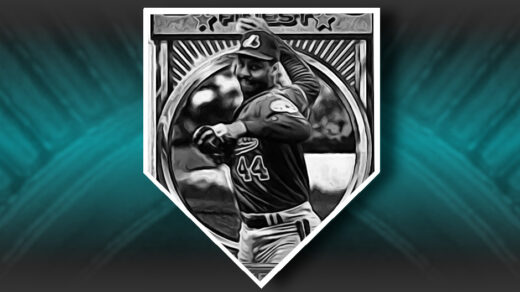
Last year Topps surprised collectors with an insert set displaying popular players against the most recognizable landmarks of the cities in which they play. For many collectors the reaction was instant deja vu as they had been building nearly identical looking sets of Panini Downtown. Which set hobbyists choose to chase largely falls along the lines of a preference for Topps or Panini, though the latter certainly got there first.
Panini’s skyline-based history stretches back to 1993 when my early collecting days were at their peak. Leaf, now part of Panini’s current incarnation, deviated from prior monochrome designs to make brightly colored cards for the first time. The cards are best displayed backwards, as the reverse sides place players against a backdrop of a city skyline. Take a look at this Eddie Murray card featuring him in front of the World Trade Center.
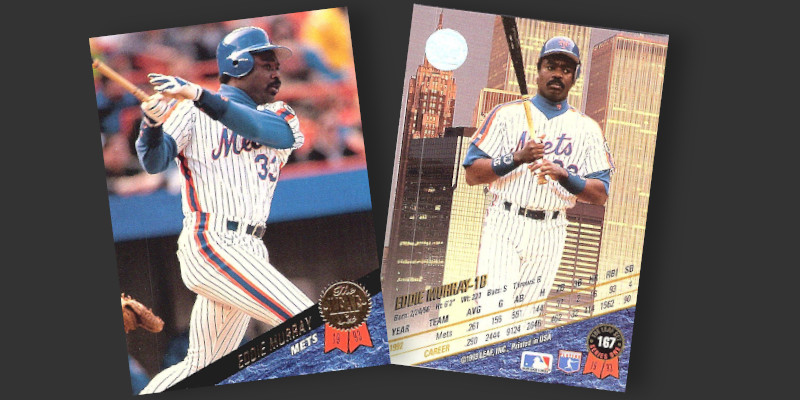
Murray looks odd in a Mets uniform as he played more than half his career in Baltimore. It’s as if he is standing in front of the wrong city and the look on his face shows he is aware of it. Baltimore wasn’t home for Murray, as he is actually a California kid that grew up playing baseball with Ozzie Smith in school. When he and Baltimore’s front office had a falling out it was the Los Angeles Dodgers that jumped to put him in their lineup.
Murray did well for Los Angeles, leading the league in batting average for 1990 but amazingly not taking home the batting title. That honor went to Willie McGee who batted six points lower for the season. This oddity popped up because McGee played most of the year in the National League where he batted .335 in just enough at-bats to qualify for the award. McGee was traded to the American League where his average plummeted 61 points for the remainder of the season.
Murray never really won many awards or took home first place finishes in flashy statistical categories. He finished in the top five MVP voting for five consecutive years (1981-1985) yet never won. He provided consistent offensive power, but rarely challenged for the lead in home runs. Murray topped out with 33 HRs in 1983, only reaching 30 five times in 21 years and only once in back-to-back seasons. For this, baseball fans and card collectors kind of relegated him to a lower order of stardom.
Looking Back at Murray’s Numbers
Eddie Murray was a very, very, very good ballplayer. That much is undisputed and he sailed into Cooperstown on his first ballot with more than 85% of the writers’ vote. He has more than 500 HRs and 3,000 hits, becoming in 1996 only the third player in history to do so after Willie Mays and Hank Aaron. The accomplishment stands out even more with half the ensuing players matching this feat having tested positive for PEDs. His 3,000 hits came despite never breaking into the top 5 in any particular year. He sits in 11th all-time in RBIs (ahead of Willie Mays) despite playing so many years in Baltimore and only finishing any particular season inside the top 3.
Murray was a beast in the 1980s. He finished the decade with the 10-year lead in RBIs (996). He finished the decade with the third highest HR total despite never hitting more than 33 in a season.
Murray does have one offensive category in which he is the all time leader: Sacrifice flies. His 128 lifetime total is one ahead of Cal Ripken (explaining a lot about the 1980s Baltimore spectator experience) and is almost 30% more than the next closest active player (40-year-old Miguel Cabrera). While sac flies certainly help a team, they do absolutely nothing towards getting card collectors to rip apart packs looking for Eddie Murray cards.
Helping Murray was another underappreciated characteristic of a ballplayer: durability. He played more games at first base than anyone in the history of the game. He is one of less than 10 players with more games under his belt than Cal Ripken, his famously durable former teammate.
Situations in which the bases were loaded are when Murray was at his best. He came to the plate in 302 of these setups and promptly batted .399. 19 of these hits were grand slams, good for 4th all-time and 3rd at the time of his retirement. Murray generated 299 RBIs with the bases loaded, a record that still stands.
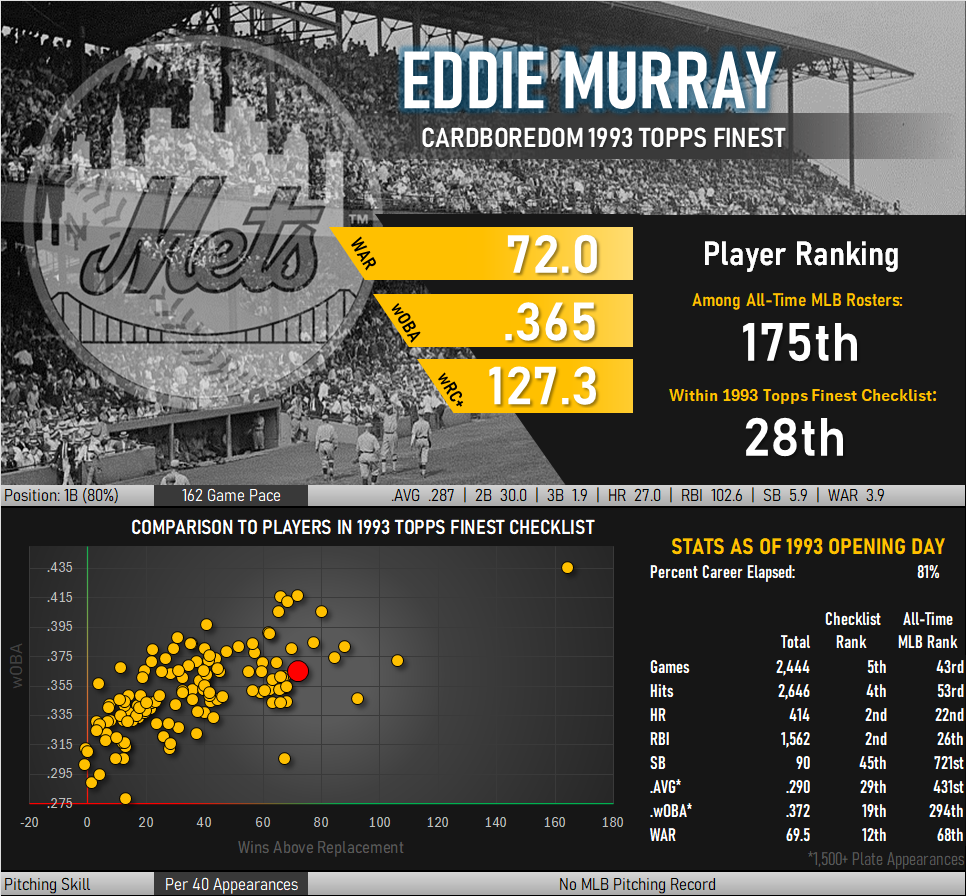
I have Eddie Murray ranked as one of the top 13 position players in the 1993 Finest set.
That Odd Looking Mets Refractor
Murray only had two seasons as a New York Met, a timeframe short enough to make photos of him in orange and blue look wrong. He played the full 1993 season for the team, prompting Topps to dutifully show him watching a home run (or sacrifice fly?) take flight in the ’93 Finest set.
He did, however, make a lasting impression on a catastrophically bad team that finished with a record of 59-103. New York pitcher Anthony Young dropped a record 27 consecutive decisions in 1992-1993 before finally getting a win on July 28. Eddie Murray drove in the game winning run, ending one of the most New York Met moments of all time.


Hey! I’m past the 70% completion mark with this card.

